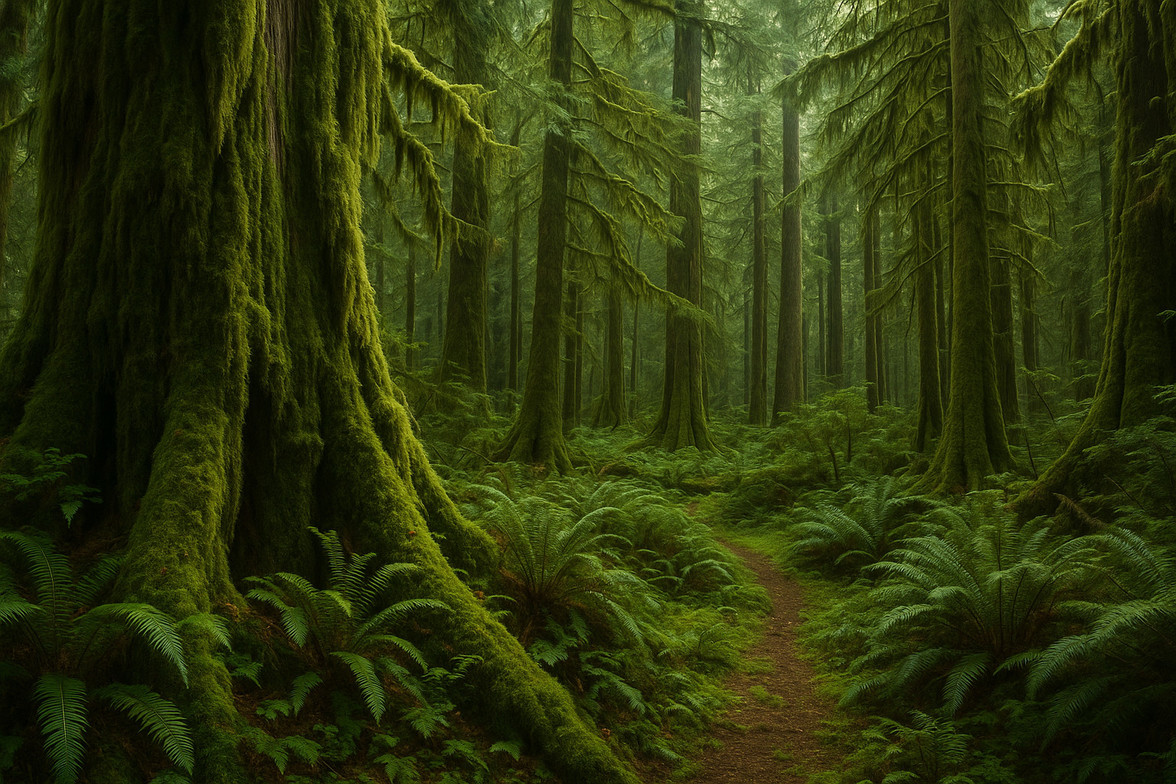
When we think of rainforests, images of the Amazon or Southeast Asia often come to mind. But did you know that Canada is home to one of the most ancient and ecologically rich temperate rainforests on Earth?
Welcome to the Great Bear Rainforest and Beyond
Stretching along the rugged coastline of British Columbia, Canada's temperate rainforests are breathtaking, mysterious, and vital to our global ecosystem. The most famous among them, the Great Bear Rainforest, spans over 6.4 million hectares—roughly the size of Ireland. This is one of the largest remaining tracts of unspoiled temperate rainforest in the world.
Other significant temperate rainforests include parts of Vancouver Island, the central and northern coast of B.C., and sections of Haida Gwaii. These areas are lush with century-old western red cedars, Sitka spruce, and hemlocks, cloaked in moss and alive with biodiversity.
What Makes These Rainforests So Magical?
Temperate rainforests are rare. They exist only in a few regions around the world where ocean currents, mountain ranges, and climate create the perfect combination of high rainfall and moderate temperatures.
Canada’s coastal rainforests are not only visually stunning—they're crucial carbon sinks, helping regulate our planet’s climate. They also support iconic species like:
-
Spirit bears (a rare white variant of the black bear)
-
Coastal wolves and cougars
-
Pacific salmon
-
Bald eagles and owls
-
Thousands of fungi and moss species
This ecosystem is an interwoven network of land, water, and culture. Indigenous Nations have stewarded these lands for millennia, embedding sustainability into every aspect of their relationship with the rainforest.
The Risks: What’s Endangering Our Rainforests?
Despite their grandeur, these ancient forests are under pressure:
-
Logging: Clear-cutting practices, even in old-growth areas, continue to threaten biodiversity and habitat stability.
-
Climate Change: Rising temperatures and shifting weather patterns impact rainfall, forest health, and species migration.
-
Resource Extraction: Industrial development—including mining, oil, and gas—can fragment habitats and pollute surrounding ecosystems.
-
Tourism and Development: While ecotourism can be a tool for conservation, unmanaged growth may damage sensitive habitats.
What Can You Do to Help?
Whether you live nearby or across the country, protecting these unique ecosystems is a shared responsibility. Here’s how you can get involved:
Learn More:
-
The Great Bear Rainforest IMAX Film offers an awe-inspiring glimpse into this region.
-
Check out Raincoast Conservation Foundation and Stand.earth for current research and campaigns.
Travel Thoughtfully:
If visiting B.C., choose eco-certified operators who partner with Indigenous communities and follow Leave No Trace principles.
Advocate for Change:
Support policies that protect old-growth forests and demand corporate responsibility in land-use decisions. Write to your local MLA or MP asking for stronger protections.
Support Indigenous-Led Stewardship:
Many coastal Nations lead conservation efforts and have land guardianships in place. Donate to or amplify their voices.
Let’s Stand for the Forests
This World Rainforest Day, let's recognize that rainforests aren’t just tropical wonders—they’re coastal sanctuaries right here in Canada. These enchanted forests don’t just store carbon or house rare species; they are living stories of resilience, wisdom, and interconnectedness.
Protecting Canada’s rainforests isn’t just about saving trees—it’s about securing a healthier future for generations to come.





